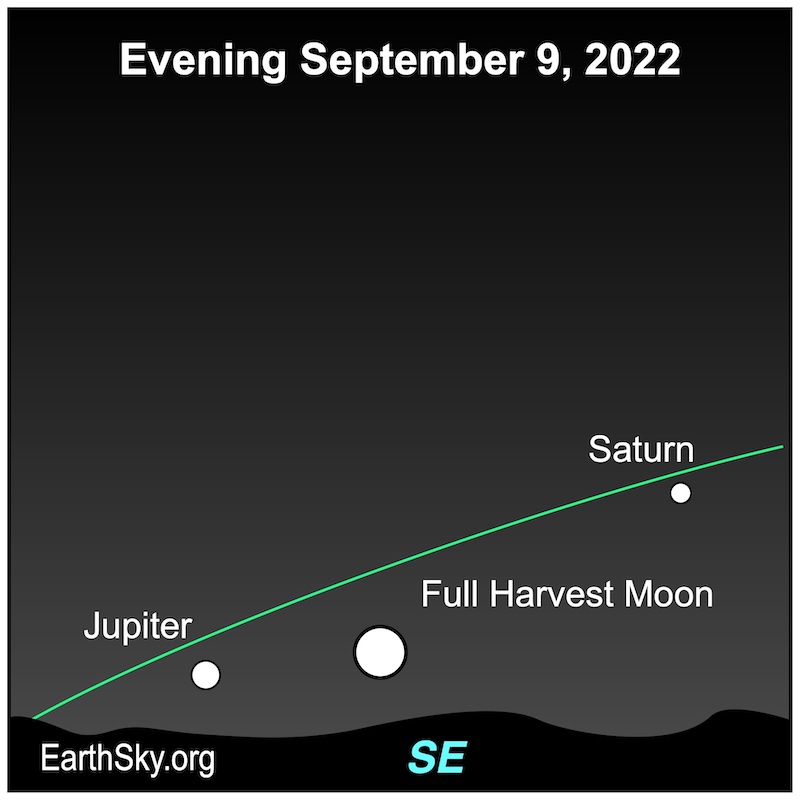
The Harvest Moon – closest full moon to the autumn equinox – happens on September 9 and 10, 2022, for the Northern Hemisphere.
When and where to look in 2022: On September 9, watch for the bright, round full moon to rise in the east at sunset. It’ll rise only shortly after sunset on September 10 (for Northern Hemisphere locations). On both nights, the bright Harvest Moon will be up all night.
Fullest moon falls at 9:59 UTC on September 10. That’s 4:59 a.m. CDT on September 10 in central North America.
What is the Harvest Moon? It’s the full moon closest to the September equinox. In 2022, the equinox occurs at 1:04 UTC on September 23. That’s 8:04 p.m. CDT on September 22.
Is the Harvest Moon bigger, brighter or yellower? Nope! But it does have distinctive characteristics, which you can read about below.
Note: For the Southern Hemisphere, the Harvest Moon always comes in March or early April.
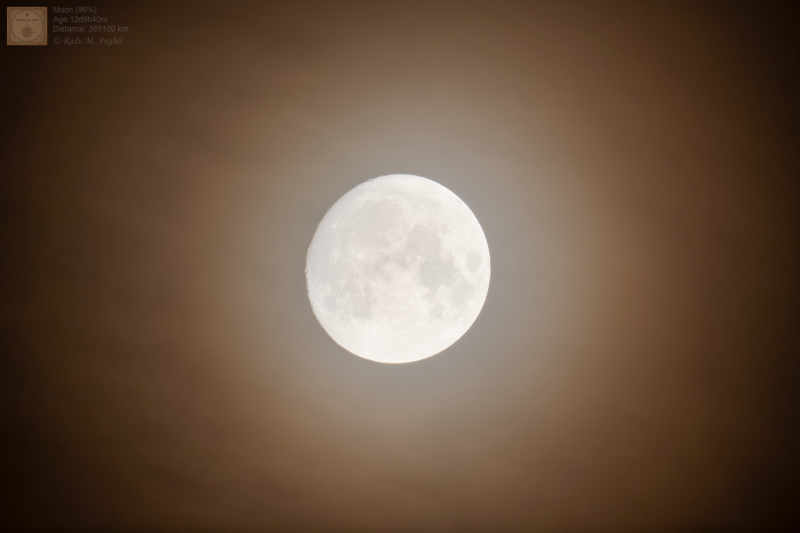
Why is the Harvest Moon special?
Harvest Moon is just a name. In some ways, it’s like any other full moon name. But these autumn full moons do have special characteristics related to the time of moonrise. Nature is particularly cooperative in giving us dusk-till-dawn moonlight, for several evenings in a row, around the time of the Harvest Moon.
On average, the full moon rises around sunset, and rises about 50 minutes later each day. But when a full moon happens close to an autumn equinox, the moon on the following nights rises closer to the time of sunset. For mid-temperate latitudes, it rises only about 20 to 25 minutes later daily for several days before and after the full Harvest Moon.
For very high northern latitudes, there’s even less time between successive moonrises. The farther north you live, the greater the Harvest Moon effect. For instance, at Anchorage, Alaska (61 degrees north latitude) the moon will rise at nearly the same time for a week!
The difference between 50 minutes and 25 minutes might not seem like much. But it means that, in the nights after a full Harvest Moon, you’ll see the moon ascending in the east relatively soon after sunset. The moon will rise during or near twilight on these nights, presenting dusk-till-dawn moonlight for several nights in a row around the time of the Harvest Moon.
Why does this happen? Check out the illustrations below:
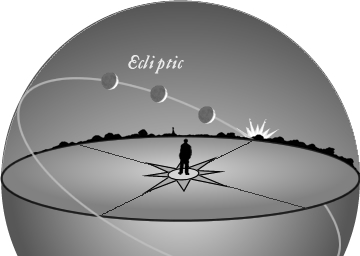

Bigger? Brighter? More colorful?
Because the moon’s orbit around Earth isn’t a perfect circle, the full moon’s distance from Earth – and apparent size in our sky – differs from month to month. If you could measure it, you’d find that some full moons are relatively small in our sky, and some are relatively big. But the changing size of full moons from month to month isn’t noticeable to the eye. Even supermoons – the closest and therefore biggest full moons – aren’t noticeably bigger (although they are noticeably brighter). In 2022, the Harvest Moon falls just a few days after lunar perigee, the moon’s closest point to Earth for the month, on September 7. So 2022’s Harvest Moon is on the big side. It just misses being a supermoon. But it’s not so big that you’d notice its bigness, with the eye alone.
Still, in any year, you might think the Harvest Moon looks bigger or brighter or more orange. That’s because the Harvest Moon has such a powerful mystique. And many people look for it shortly after sunset around the time of full moon. After sunset around the time of any full moon, the moon will always be near the horizon. It’ll have just risen. It’s the location of the moon near the horizon that causes the Harvest Moon – or any full moon – to look big and orange in color.
The orange color of a moon near the horizon is a true physical effect. It stems from the fact that – when you look toward the horizon – you’re looking through a greater thickness of Earth’s atmosphere than when you gaze up and overhead.
The bigger-than-usual size of a moon seen near the horizon is something else entirely. It’s a trick that your eyes are playing – an illusion – called the Moon Illusion. You can find many lengthy explanations of the Moon Illusion by doing an online search for those words.
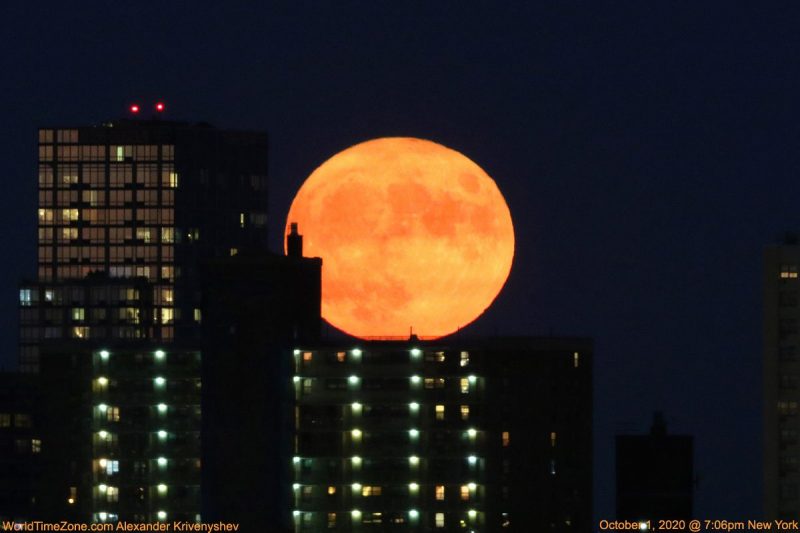
How did the Harvest Moon get its name?
The shorter-than-usual lag time between moonrises around the full Harvest Moon means no long period of darkness between sunset and moonrise for days in succession.
In the days before tractor lights, the lamp of the Harvest Moon helped farmers gather their crops despite the diminishing daylight hours. As the sun’s light faded in the west, the moon would soon rise in the east to illuminate the fields throughout the night.
Who named the Harvest Moon? That name probably sprang to the lips of farmers throughout the Northern Hemisphere, on autumn evenings, as the Harvest Moon aided in bringing in the crops.
The name was popularized in the early 20th century by the song below.
Shine On Harvest Moon
By Nora Bayes and Jack Norworth (1903)
Shine on, shine on harvest moon
Up in the sky,
I ain’t had no lovin’
Since January, February, June or July
Snow time ain’t no time to stay
Outdoors and spoon,
So shine on, shine on harvest moon,
For me and my gal.
And don’t miss this more recent version of the song by Leon Redbone.
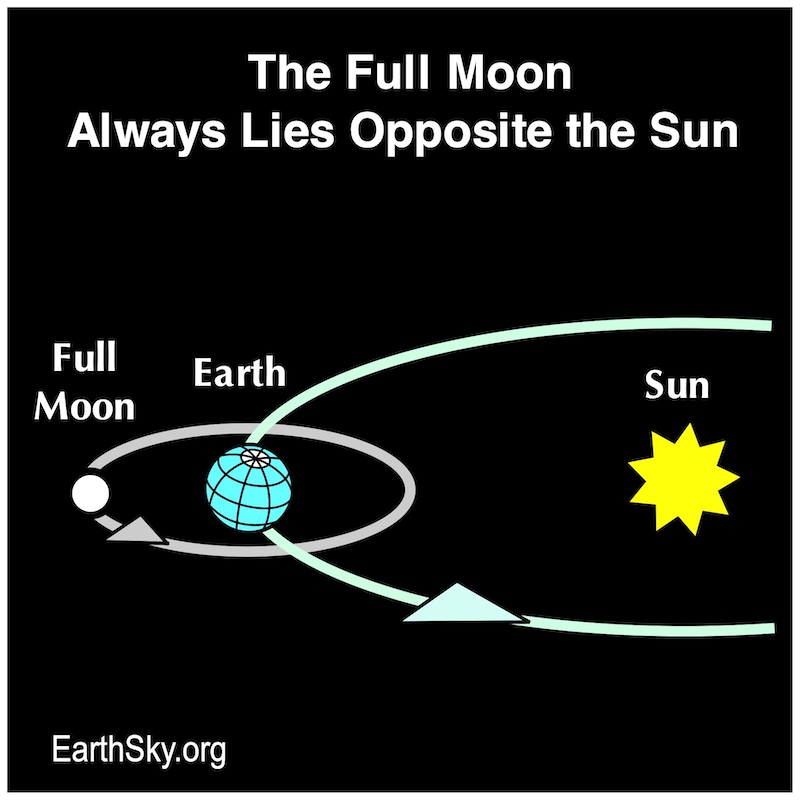
Bottom line: The September full moon – the Harvest Moon – happens overnight on September 9, 2022. This full moon lies near Jupiter and Saturn. The moon will rise only shortly after sunset – and look full – on the night of September 10, 2022, too.
The post 2022’s September full moon is the Harvest Moon first appeared on EarthSky.
0 Commentaires